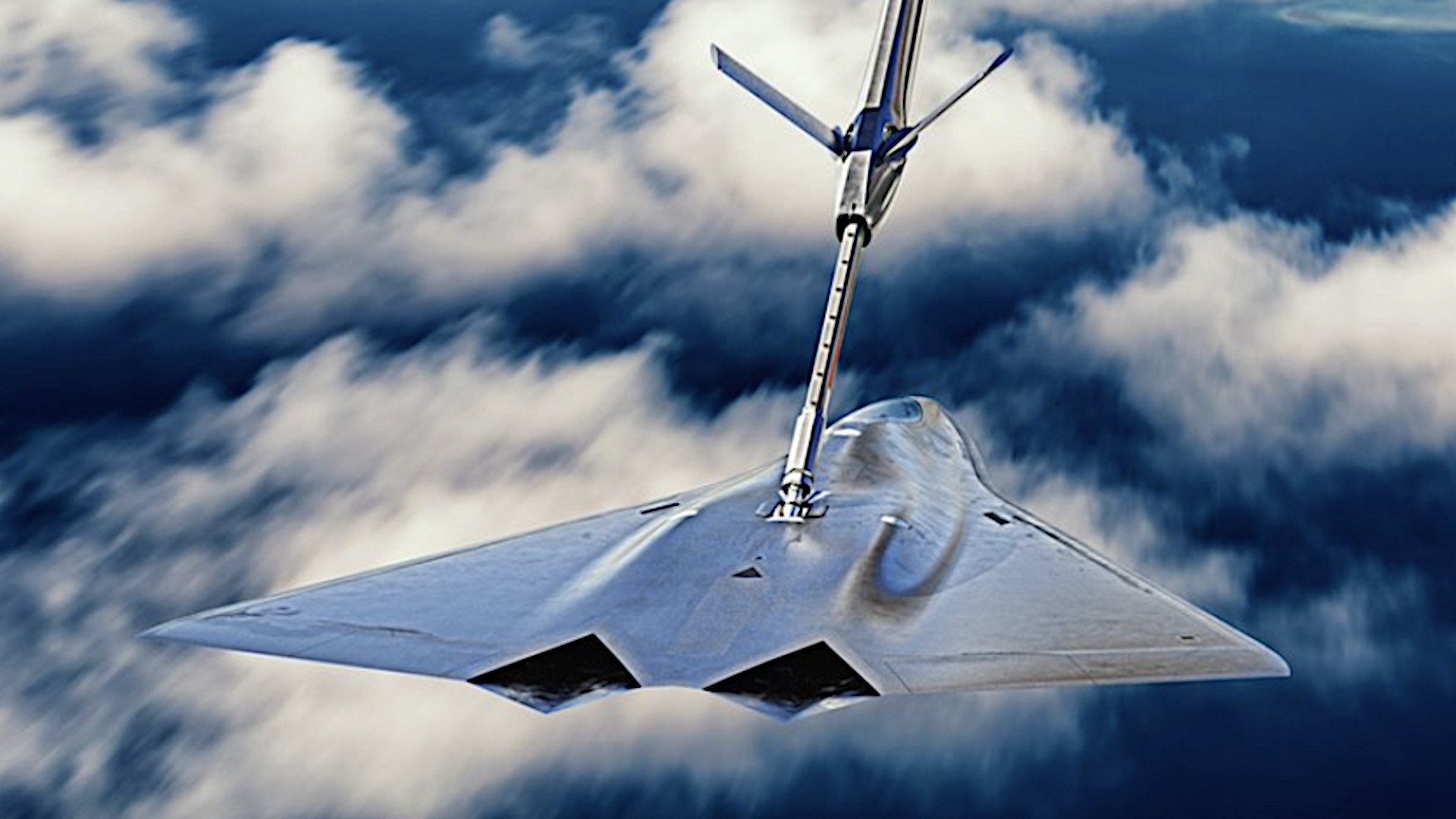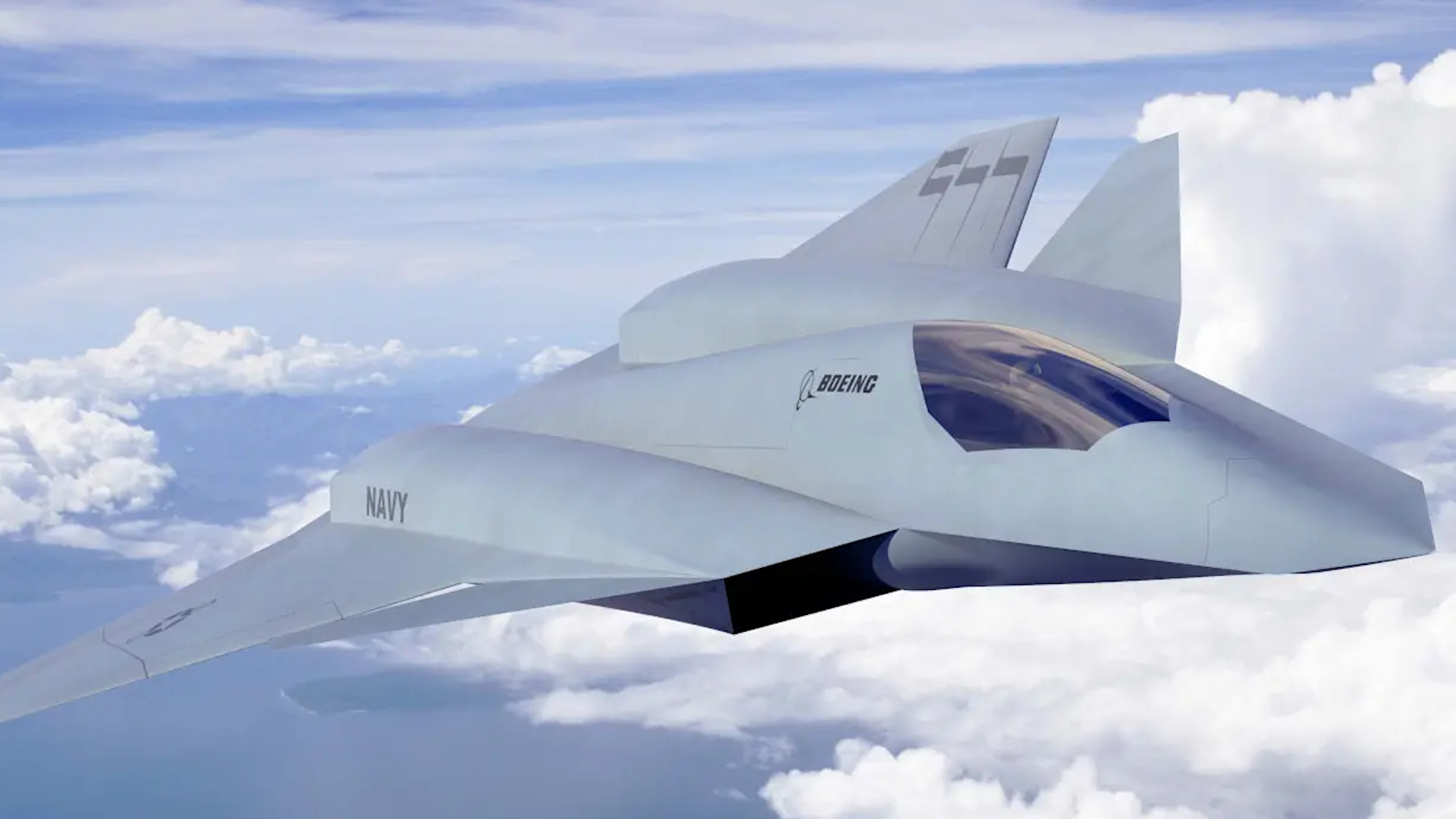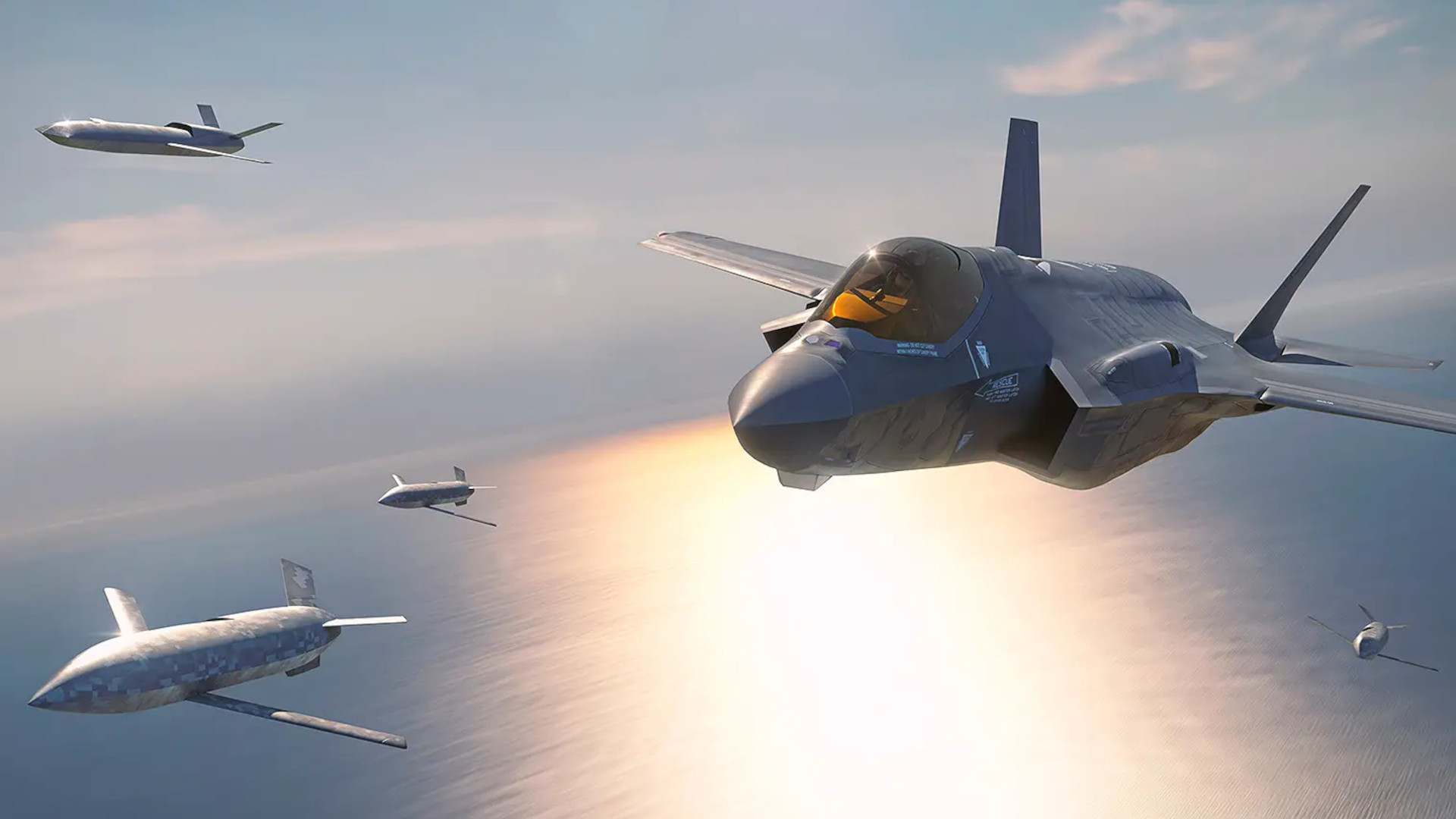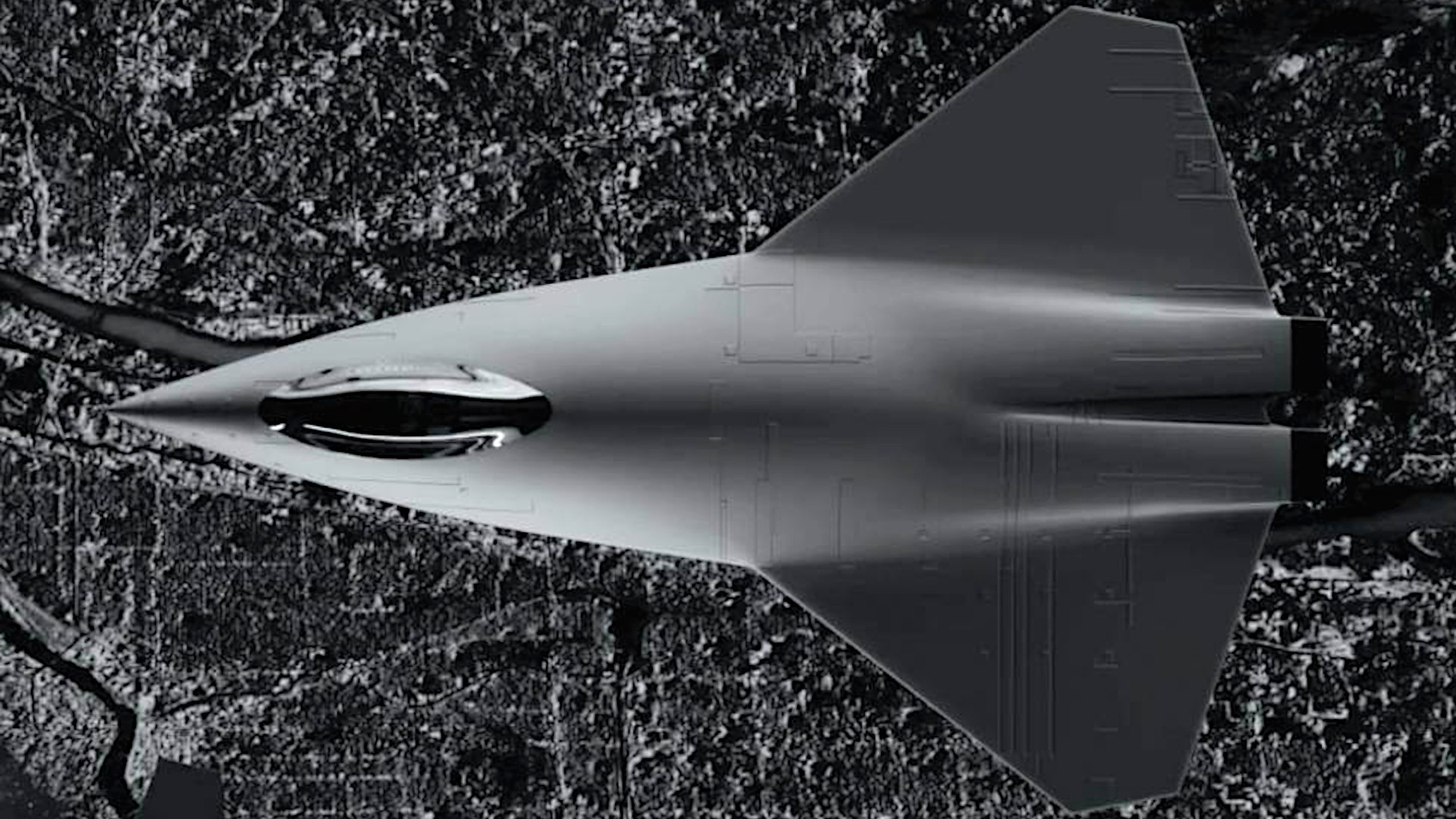Secretary of the Air Force Frank Kendall says that his service is doing everything it can to avoid the kinds of “acquisition malpractice” he says is still dogging the F-35 Joint Strike Fighter when it comes to the competition for its new stealth six-generation crewed tactical jet. This will include an insistence on a firmer design from the outset and U.S. government ownership of at least a significant portion of the data rights to it. This will help the Air Force avoid giving one company a “perpetual monopoly” on future upgrades and sustainment contracts, as has been the case with Lockheed Martin and the F-35.

Secretary Kendall offered new details about the Air Force’s plans for selecting the crewed combat jet component of its Next Generation Air Dominance (NGAD) program at a gathering hosted by the Defense Writers Group on Monday. The service announced that it had formally issued a classified solicitation for the engineering and manufacturing phase of the development of this aircraft earlier this month.
The Air Force is looking to pick a single winning NGAD combat jet proposal next year and is currently planning to buy around 200 of them, in total. The service says the new stealthy combat jet will serve as a direct replacement for its F-22 Raptor stealth fighters.

“We’re not going to do two NGADs. We’re only going to do one,” Kendall said at the Defense Writers Group meeting, according to Air & Space Forces Magazine.
This makes clear that the Air Force has abandoned any idea of pursuing multiple designs or iterations even on the same design. The possibility of NGAD combat jets with different wing options, one optimized for operations in the Pacific region and the other for missions in and around Europe, had been raised in the past. Kendall said that the “development phase is far too expensive” to allow for something like that.
Kendall has previously said that he expects each crewed NGAD combat jet, also sometimes referred to simply as the NGAD platform, to cost “multiple hundreds of millions of dollars.” More granular details about what the Air Force is looking for in this aircraft, as well as more specific information about the recently announced solicitation, are classified.
The crewed NGAD combat jet is expected to have broadband stealth features, next-generation sensors and communications suites, and significant range and payload capacity, including the ability to carry new missiles and other weapons. An array of advanced electronic and other “spectral” warfare capabilities will be a core part of the design that you can more about here. The aircraft will also have the systems necessary to serve as airborne control nodes for advanced drones.
Whatever the final proposed aircraft looks like and what its capabilities are, Air Force has a definite desire for it to be a relatively mature and firm design. At the Defense Writers Group gathering, Secretary Kendall highlighted problems associated with a process known as concurrency with regard to the development of the F-35, according to Air Force Times.
In this context, concurrency describes a combined development and production process wherein a company begins building something, like the F-35, without the design being completely tested or vetted first. Design changes and other upgrades are then integrated on a rolling basis. The idea here is to help get the production line going faster, sooner. The Pentagon presented this as a cost and time-saving exercise for the Joint Strike Fighter program, but very much the opposite turned out to be the case. Beyond just the three different core variants of the aircraft, F-35s across the U.S. military now exist in a number of different subconfigurations. Some are now cost-prohibitive to upgrade and are unlikely to meet their original service life expectations.

Kendall has acknowledged that there will still be some concurrency in the NGAD combat jet’s design process, but that it will be done “in a rational way, that doesn’t take excessive risk.” The Secretary specifically highlighted how advances in digital design and engineering tools will help in avoiding these issues.
“Everybody lives basically in the same design laboratory, if you will, so we have intimate knowledge of what the competitors are doing in their design,” Kendall said, Air Force Times reported. “We’re very involved with them. … We’re going to have as integrated and as fully integrated a design process and contracting process as possible.”
“Now you don’t wait for [design] documents [from the contractor], you can see the design firsthand,” he added.
A number of issues that have emerged during Boeing’s development of the T-7A Red Hawk jet trainer, a poster child for digital engineering processes, have prompted questions about the limits of the technology.
NGAD does also have the benefit of being able to leverage nearly a decade of previous advanced aircraft design work, started under Kendall himself, at least. Those efforts produced at least one flying demonstrator that has reportedly performed well in testing, which would help reduce risk. The Air Force has already been using F-22 Raptor stealth fighters, and very likely other platforms, to conduct flight testing of various related technologies and systems. The service is also working in very close cooperation on related development projects with the Navy, which is also pursuing a sixth-generation crewed combat jet, or F/A-XX, as part of its separate NGAD program.

When it comes to the NGAD combat jet contract, Kendall also highlighted the critical importance of securing key data rights to the design, particularly in regards to software, in his remarks earlier this week. This is another issue that has created particularly pronounced issues for the F-35 program, especially when it comes to maintenance and other sustainment activities, as you can read more about in this recent War Zone feature.
When Lockheed Martin won the contract to develop the F-35 it came at a time when the Air Force’s central contracting concept said that “when a contractor won a program it owned the program. It was going to do the whole lifecycle of the program,” Kendall explained, according to a report from Breaking Defense. That was “I think, quite frankly, was a serious mistake” he added.
“What that basically does is create a perpetual monopoly,” Kendall noted, according to Air Force Times‘ report about the Secretary’s remarks at the Defense Writers Group meeting. “I spent years struggling to overcome acquisition malpractice [on the F-35], and we’re still struggling with that to some degree. So we’re not going to do that with NGAD.”
Kendall, who has a long history in the Pentagon’s bureaucracy, has made no secret of his views on how the acquisition of the F-35 was handled over the years. He has referred to various aspects of the program as “acquisition malpractice” since at least 2012, when he was nominated by then-President Barack Obama to take up the post of Undersecretary of Defense for Acquisition, Technology, and Logistics. That position is often referred to more simply as the Pentagon’s chief weapons buyer.

Related to the data rights issue, “we’re also making sure we have modular designs with open systems so that going forward we can bring new suppliers in — [irrespective of] whoever we choose as the platform integrator,” Kendall explained, per Breaking Defense. “And we’ll have a much tighter degree of government control over the future of that program than we’ve had.”
This in many ways mirrors what is known about how the B-21 Raider stealth bomber program has been managed, which was influenced heavily by problems with the acquisition process for its predecessor, the B-2.
With regards to the NGAD combat jet competition, it will certainly be interesting to see how all this does or doesn’t impact who bids and the nature of their offerings. In his remarks on Monday, Kendall alluded to there being at least two companies already doing tangential work on this aircraft.
However, “we have not received any proposals yet but we expect multiple proposals in the future,” an Air Force spokesperson subsequently clarified in a statement to Breaking Defense. “We will not be able to provide the company names or the number of offers for the NGAD platform source selection. The acquisition strategy accounts for an engineering and manufacturing development contract intended to be awarded in 2024.”
The expectation is that the three big names in military aviation in the United States today – Lockheed Martin, Northrop Grumman, and Boeing – will be among the bidders. Whoever the Air Force ultimately selects as the prime contractor will of course have a broad array of subcontractors and suppliers working for them, which could include the competition.
The Air Force will also be working to acquire advanced drones with high degrees of autonomy, referred to as Collaborative Combat Aircraft (CCA), in parallel. The service is currently planning to acquire at least 1,000 of these uncrewed aircraft, and likely many more. The initial 1,000 CCA figure is based on a concept of operations that would see two of those drones paired with each of the 200 NGAD combat jets, as well as 300 F-35As.

The Air Force’s future CCA fleets could also include multiple designs. It seems increasingly likely that a broader number of companies will have a greater interest in this competition, rather than the one for the NGAD combat jet. NGAD may well turn out to be the last new type of crewed combat jet the Air Force buys at all.
Altogether, Kendall said the Air Force intends to hold “as integrated and as fully transparent a design process and contracting process as possible.” How all of this will ultimately play out, and what of the contracting process is made public due to the high degree of classification surrounding the entire NGAD program, very much remains to be seen.
Contact the author: joe@thedrive.com
